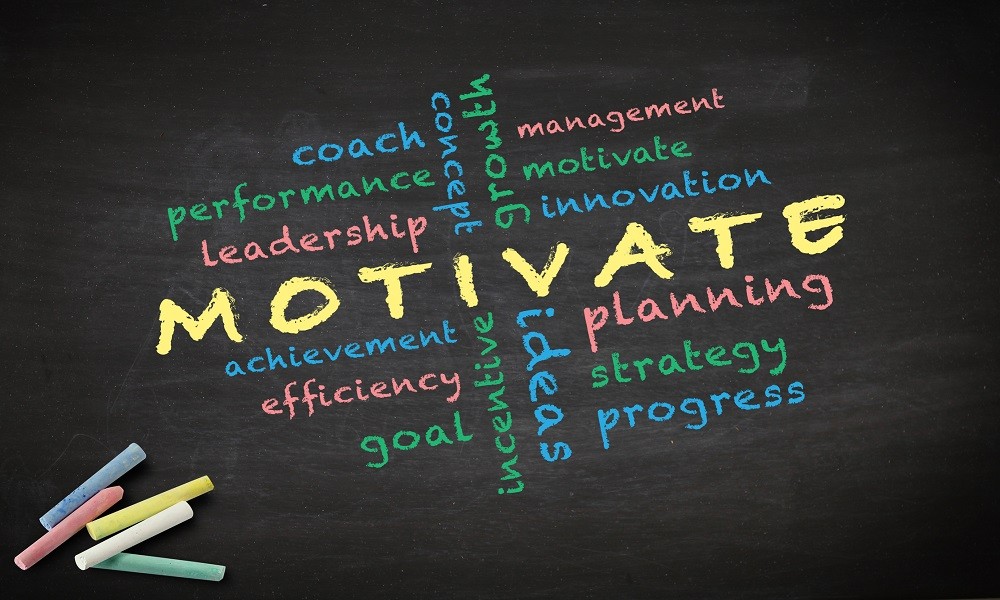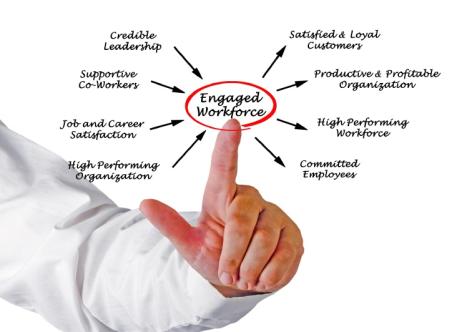To engage your team, clearly communicate expectations and provide opportunities for growth and collaboration. In today’s competitive business landscape, it is essential to have an engaged team that is motivated, productive, and committed to the organization’s goals.
Engaging your team involves fostering a sense of purpose, ensuring clear communication, recognizing individual contributions, and creating a supportive and collaborative work environment. When team members feel valued, heard, and included, they are more likely to be engaged and committed to their work.
We will explore strategies and best practices for effectively engaging your team, promoting a positive work culture, and driving business success.

Credit: peopledevelopmentmagazine.com
Create A Positive Work Environment
Engaging your team is crucial for creating a positive work environment. Foster open communication, recognize achievements, and empower employees to contribute their ideas and skills to promote collaboration and motivation within the team.
Creating A Positive Work Environment
Creating a positive work environment is essential for fostering team engagement and productivity. When employees feel valued, supported, and motivated, they are more likely to be invested in their work and contribute to the overall success of the team. Here are two key ways to create a positive work environment that encourages collaboration and open communication:
Foster Open Communication
Encouraging open communication in the workplace is crucial for building trust and nurturing a positive work environment. When team members feel comfortable expressing their thoughts, ideas, and concerns, it creates a strong foundation for effective teamwork.
Here are a few strategies to foster open communication:
- Hold regular team meetings to discuss progress, challenges, and upcoming projects.
- Provide channels for anonymous feedback to ensure everyone’s voice is heard.
- Establish an open-door policy, where employees can approach their supervisors or managers with any questions or concerns.
By implementing these strategies, you create an atmosphere where team members feel encouraged to share their opinions, discuss ideas, and collaborate effectively.
Promote Collaboration
Collaboration is key to a positive work environment as it fosters teamwork, boosts creativity, and improves problem-solving abilities. By promoting collaboration, you encourage employees to work together, leverage their diverse skills and knowledge, and achieve shared goals.
To promote collaboration within your team, consider the following:
| Strategies | Benefits |
|---|---|
| Create cross-functional teams | Facilitates knowledge sharing and encourages different perspectives. |
| Implement collaborative tools | Enables seamless communication, file sharing, and project management. |
| Encourage brainstorming sessions | Promotes creativity, innovation, and idea generation. |
By promoting collaboration, you create a work environment where individuals feel supported, valued, and motivated to work together towards achieving common goals. This not only improves team dynamics but also enhances overall productivity and performance.
Provide Opportunities For Growth
One of the most effective ways to engage your team is by providing them with opportunities for growth. When employees feel like they have the chance to learn and develop new skills, they are more likely to be motivated and engaged in their work. Offering learning and development programs and encouraging skill-building can help your team members feel valued and invested in their professional growth.
Offer Learning And Development Programs
Give your team members the chance to improve their knowledge and skills by offering learning and development programs. These programs can include workshops, seminars, online courses, and mentorship programs. By investing in their ongoing education, you show your team that their growth is important to you.
| Program | Description |
|---|---|
| Workshops | In-person or virtual sessions focused on specific topics or skills. |
| Seminars | Presentations and discussions led by industry experts. |
| Online courses | Self-paced learning modules accessible anytime, anywhere. |
| Mentorship programs | Pairing team members with experienced mentors to guide their development. |
Encourage Skill-building
Encourage your team members to build new skills and pursue opportunities for growth, both within and outside their current roles. When employees are given the chance to develop their strengths and explore other areas of interest, they become more engaged and are likely to bring new skills back to the team.
- Encourage employees to take on new responsibilities or projects that align with their interests and goals.
- Provide resources and support for employees to attend conferences or professional development events.
- Offer cross-training opportunities, allowing team members to learn from one another and expand their skill sets.
By actively encouraging skill-building, you create a culture of continuous learning and growth within your team, leading to increased engagement and productivity.
Recognize And Reward Achievements
Engage your team by recognizing and rewarding their achievements, fostering a motivating work environment.
Implement A Recognition Program
Implementing a recognition program is a powerful way to acknowledge and appreciate the achievements of your team members. It allows you to create a positive and motivating work environment where individuals feel valued and recognized for their contributions. This is essential for building employee satisfaction, confidence, and loyalty. A recognition program can take various forms, depending on the nature of your organization and the preferences of your team members.
Here are some effective strategies to consider:
- Create a “Employee of the Month” program that highlights exceptional performance and contributions. Recognize the recipient’s achievements publicly and offer a small reward or perk.
- Establish a peer recognition program where employees can nominate their colleagues for outstanding work. This not only fosters teamwork but also encourages a culture of support and appreciation.
- Implement a quarterly or annual awards ceremony to honor exceptional individuals or teams who have demonstrated outstanding achievements or made significant contributions to the organization’s success.
A recognition program should be fair, transparent, and consistent. It should be thoughtfully designed to align with your company values and goals, ensuring that it reflects the specific achievements and behaviors you wish to recognize.
Offer Incentives
In addition to a recognition program, offering incentives is another effective way to engage your team and reward their achievements. Incentives provide tangible benefits or rewards for reaching specific goals or milestones, further motivating employees to perform at their best. Here are some incentive ideas to consider:
- Financial incentives such as bonuses, raises, or profit-sharing plans can be powerful motivators for employees who are driven by financial stability or rewards.
- Non-financial incentives such as additional vacation days, flexible work schedules, or the opportunity to work on a special project can also be highly motivating and rewarding.
- Team-based incentives, such as team outings or team-building excursions, can foster collaboration and a sense of camaraderie among team members.
When offering incentives, it’s important to clearly communicate the criteria for earning them and ensure that they are fair and achievable. Regularly assess and revise your incentive program to keep it fresh, relevant, and aligned with the goals of your organization and the preferences of your team members.

Credit: www.managingamericans.com
Promote A Healthy Work-life Balance
Discover effective strategies to engage your team and promote a healthy work-life balance. Encourage open communication, prioritize mental well-being, and provide opportunities for professional growth, fostering a motivated and fulfilled workforce.
Encourage Time Off And Rest
Allowing your team members to take time off and rest rejuvenates their energy levels and enhances their productivity. Encouraging time off shows that you value work-life balance and prioritize employee well-being. It helps your team members recharge and return to work with a renewed sense of motivation and creativity.
Consider implementing policies that:
- Offer paid vacation days to ensure employees have the opportunity to relax and spend quality time with loved ones.
- Provide sick leave without penalties so that employees can take care of their health without worrying about job security.
- Allow for flexible scheduling so that team members can attend personal appointments or events without feeling overwhelmed.
Remember, a well-rested team is a productive team!
Support Flexible Work Arrangements
Supporting flexible work arrangements not only promotes a healthy work-life balance but also increases employee satisfaction and retention. Giving your team the flexibility to choose when and where they work allows them to better manage personal commitments while meeting work deadlines.
Consider the following flexible work arrangements:
- Remote work options, where employees can work from home or any location that suits their needs.
- Flexible working hours, allowing employees to customize their schedules to align with their personal preferences and obligations.
- Part-time or job-sharing arrangements, enabling employees to strike a balance between work and personal life.
This flexibility fosters trust and empowerment within your team, boosting morale and ultimately productivity.
Encourage Team Bonding And Socialization
Promote team camaraderie and interaction through team bonding activities, fostering a positive work environment and enhancing collaboration among team members. Strengthening social connections can boost morale and productivity, resulting in a more engaged and cohesive team.
Organize Team-building Activities
One effective way to encourage team bonding and socialization is by organizing team-building activities. These activities provide an opportunity for team members to connect with each other on a personal level, break down barriers, and foster a sense of camaraderie. Having fun and engaging activities can help create a more positive and cohesive team environment. Some examples of team-building activities include outdoor adventures like hiking or ropes courses, virtual escape rooms, or even simple icebreaker games played in the office.Create Social Opportunities
Creating social opportunities is another important aspect of encouraging team bonding and socialization. By providing spaces or events where team members can interact in a more relaxed and informal setting, you can foster deeper connections between individuals. Consider organizing monthly team lunches or happy hour outings where team members can unwind, share their experiences, and get to know each other outside of work. This can lead to improved communication and collaboration within the team. Additionally, creating online platforms or groups where team members can share common interests or hobbies can also help facilitate socialization and strengthen team bonds.Here are some ideas on how to create social opportunities:
- Organize monthly team lunches or happy hour outings.
- Create online platforms or groups for shared interests or hobbies.
- Encourage team members to take breaks together and engage in casual conversations.
- Assign team members to work on projects or tasks together, encouraging collaboration and interaction.
- Create a designated common area where team members can gather and socialize during break times.
Remember, social opportunities should be inclusive and considerate of different interests and preferences. Encouraging team members to participate voluntarily and respecting their boundaries is essential to create a comfortable and welcoming environment for everyone.

Credit: nethunt.com
Frequently Asked Questions Of How To Engage Your Team?
How Do You Engage Your Team Effectively?
To effectively engage your team, communicate openly and provide clear goals. Encourage collaboration, recognize achievements, and give constructive feedback. Foster a positive work environment, promote professional development, and empower team members to make decisions. Set a good example, listen to their ideas, and encourage innovation.
What Are The 5 C’s Of Employee Engagement?
The 5 C’s of employee engagement are: Communication, Connection, Collaboration, Contribution, and Compensation. Communication involves open and transparent communication between employees and management. Connection refers to building relationships and a sense of belonging. Collaboration promotes teamwork and shared goals. Contribution recognizes and values employee input and ideas.
Compensation includes fair and competitive compensation packages.
How Can I Keep My Team Engaged?
To keep your team engaged, provide clear goals, regular communication, and ongoing feedback. Encourage teamwork, recognize achievements, and offer professional growth opportunities. Foster a positive work environment, promote work-life balance, and ensure everyone feels valued.
Conclusion
Creating an engaging team environment requires a thoughtful approach and consistent effort. By fostering open communication, encouraging collaboration, providing clear goals, recognizing and celebrating achievements, and promoting a positive work culture, you can lay the foundation for a motivated and high-performing team.
Remember, engagement is not a one-time initiative but an ongoing process that requires continuous nurturing. When your team feels valued, supported, and inspired, the results will speak for themselves.